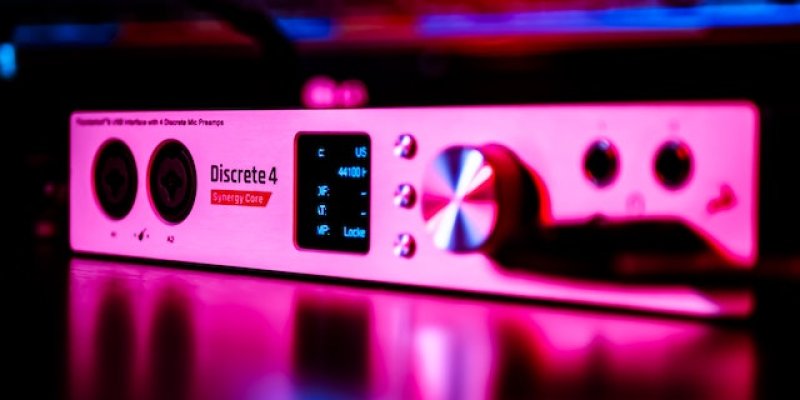
Are you wondering about the mechanics behind an audio interface but need a simpler explanation than what a highly experienced audio engineer may give you?
I've been using these babies for the better part of 20 years, but I've only recently begun to truly internalize and understand how they truly work in this digital age of music.
An audio interface is an external device that connects audio equipment, such as microphones, instruments, and speakers, to a computer for recording, playback, and sound processing.
It bridges analog audio signals and digital data, allowing for high-quality audio capture and playback.
When it comes to audio processing, it's crucial to understand the distinction between audio interfaces and sound cards. While both serve the purpose of processing and enhancing audio signals, they differ in their capabilities.
Sound cards are typically built into computers and laptops, designed for basic audio playback, and lack the necessary inputs and outputs required for professional audio work.
On the other hand, audio interfaces are external devices specifically designed to handle audio tasks with higher accuracy and greater versatility.
They offer a wide range of inputs and outputs, improved signal quality, and additional features necessary for professional audio recording and production.
One of the key features of audio interfaces is their ability to handle multiple inputs and outputs, providing flexibility in capturing and routing audio signals.
Inputs are the connections where you plug in your microphones, instruments, or other audio sources to capture sound.
Audio interfaces offer various input options, including XLR inputs for microphones, 1/4" instrument-level inputs for guitars and keyboards, and even digital inputs for connecting external devices.
Outputs allow you to connect your interface to speakers or headphones for monitoring and playback.
The number and types of inputs and outputs available on an audio interface depend on the specific model and its intended use, enabling you to create complex recording setups and connect various audio devices seamlessly.
Most modern audio interfaces utilize a USB, Thunderbolt, or FireWire connection, allowing fast and reliable data transfer between the interface and your computer.
The connection type you choose depends on your computer's available ports and the compatibility of the interface.
Once you've connected the interface, you may need to install specific drivers or software provided by the manufacturer.
These drivers enable your computer to recognize and communicate effectively with the interface. Once the drivers are installed, you can start recording and producing your music with enhanced audio quality.
Related Post: The Best Audio Interfaces For Mac
Many audio interfaces also come with built-in amplifiers or preamps. These amplifiers boost the low-level signals from microphones or instruments to a more usable level, ensuring a clean and louder audio signal.
High-quality preamps can make a big difference in capturing the nuances and dynamics of your recordings, particularly if you're working with professional-grade microphones or instruments.
Preamps can vary in quality and characteristics, such as their ability to provide clean gain, tonal coloration, or additional features like pad switches or phantom power for condenser microphones.
When selecting an audio interface, consider the quality and versatility of its built-in amplifiers if you plan to use microphones or instruments that require amplification.
When working with audio interfaces, you'll often come across the term "sample rate." Sample rate refers to the number of samples taken per second to digitally represent an analog audio signal.
Audio interfaces allow you to adjust the sample rate according to your needs. Higher sample rates generally result in better audio quality, as they capture more detail and frequency range.
However, it's important to note that higher sample rates also require more processing power and storage space. Therefore, finding the right balance between audio quality and resource usage is essential.
Consider the nature of your projects, your computer's capabilities, and your audio devices' requirements when selecting the appropriate sample rate for your interface.
Understanding the conversion between analog and digital signals is vital in comprehending the role of audio interfaces.
Analog signals are continuous waveforms produced by microphones and instruments, while digital signals are discrete values used by computers.
Analog is what the artists and producers were using back in the day before music saw a revamp with the digital age.
Audio interfaces handle the conversion from analog to digital during recording and from digital to analog during playback, ensuring accurate and faithful representation of sound.
However, this conversion process introduces a slight delay called latency.
Latency can be a problem, especially when performing real-time monitoring or recording, as it can affect the synchronization between multiple audio sources or introduce a noticeable delay between playing an instrument and hearing it.
Low-latency interfaces are preferred for real-time applications, as they minimize this delay and allow for seamless interaction between the performer and the audio system.
Higher-priced interfaces often feature better components, such as superior converters, high-end preamps, and more input/output options.
These factors improve audio accuracy, reduce noise levels, and enhance durability. However, it's important to consider your specific needs and budget when selecting an audio interface.
Many affordable options are available that still deliver excellent sound quality for home studios or hobbyists.
You can find an interface that strikes the right balance between quality and affordability by evaluating your recording requirements, the types of instruments or microphones you'll be using, and your long-term goals.
Related Post: Home Music Studio Ideas - Ways To Affordably Get High-Quality Sound

As a session singer, writer, and producer that has worked with over 300 clients to provide high-quality jingles, singles, and features, Yona spends her time creating and marketing new music and helpful resources for creators. Check out Yona’s latest releases on her Spotify, her Youtube and share if you like it!
If you are in need of singer, songwriter or song producer services, see what Yona Marie can offer you on her services page.